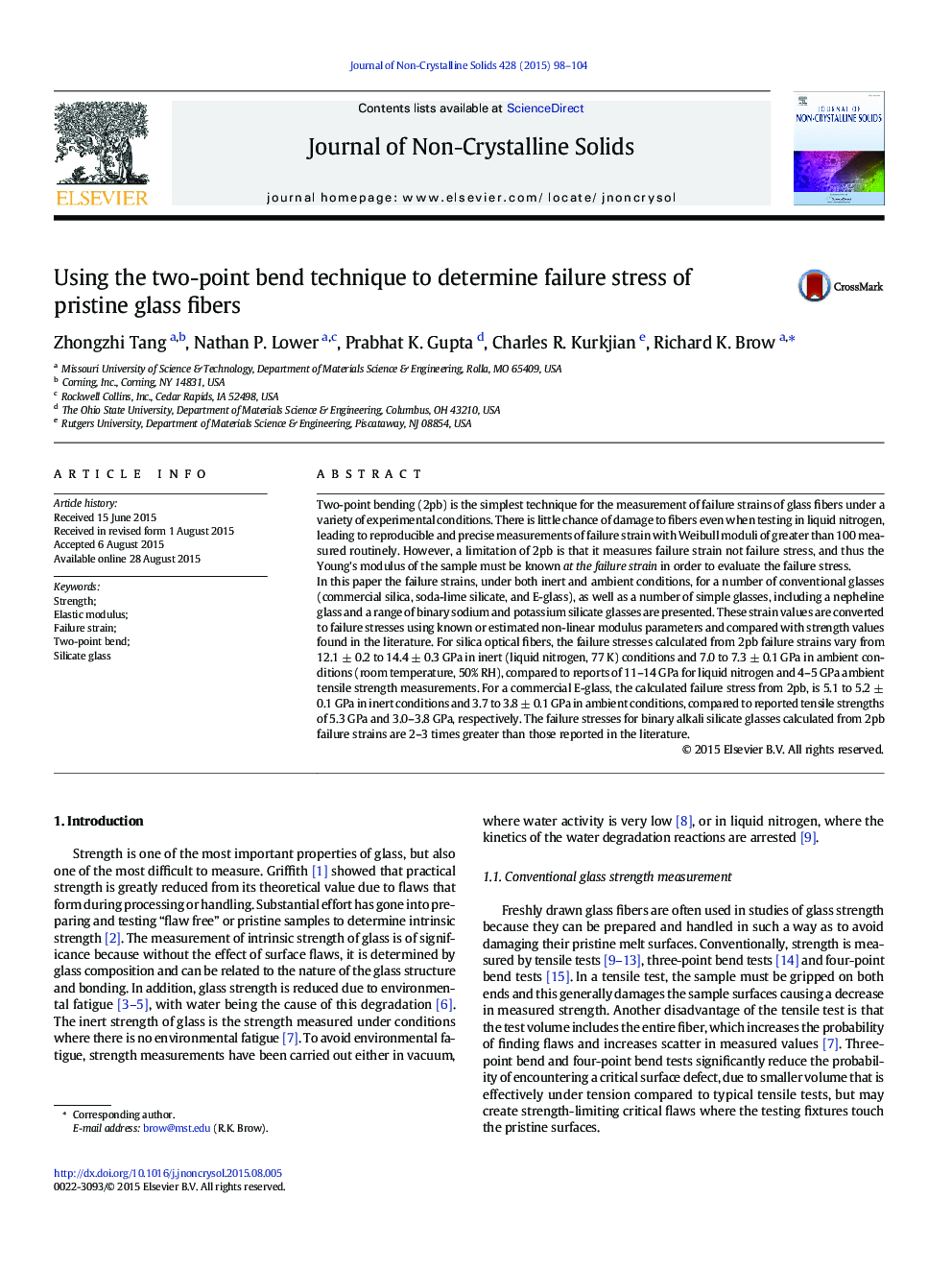| کد مقاله | کد نشریه | سال انتشار | مقاله انگلیسی | نسخه تمام متن |
|---|---|---|---|---|
| 1480569 | 1510416 | 2015 | 7 صفحه PDF | دانلود رایگان |
• Two-point bend technique used to measure failure strain of silicate glass fibers
• Failure stresses are calculated from reported non-linear elastic moduli
• Inert failure stresses of silica and E-glass agree with reported tensile strengths
• Inert delayed failure of alkali silicate glasses may reveal strain-induced relaxation
Two-point bending (2pb) is the simplest technique for the measurement of failure strains of glass fibers under a variety of experimental conditions. There is little chance of damage to fibers even when testing in liquid nitrogen, leading to reproducible and precise measurements of failure strain with Weibull moduli of greater than 100 measured routinely. However, a limitation of 2pb is that it measures failure strain not failure stress, and thus the Young's modulus of the sample must be known at the failure strain in order to evaluate the failure stress.In this paper the failure strains, under both inert and ambient conditions, for a number of conventional glasses (commercial silica, soda-lime silicate, and E-glass), as well as a number of simple glasses, including a nepheline glass and a range of binary sodium and potassium silicate glasses are presented. These strain values are converted to failure stresses using known or estimated non-linear modulus parameters and compared with strength values found in the literature. For silica optical fibers, the failure stresses calculated from 2pb failure strains vary from 12.1 ± 0.2 to 14.4 ± 0.3 GPa in inert (liquid nitrogen, 77 K) conditions and 7.0 to 7.3 ± 0.1 GPa in ambient conditions (room temperature, 50% RH), compared to reports of 11–14 GPa for liquid nitrogen and 4–5 GPa ambient tensile strength measurements. For a commercial E-glass, the calculated failure stress from 2pb, is 5.1 to 5.2 ± 0.1 GPa in inert conditions and 3.7 to 3.8 ± 0.1 GPa in ambient conditions, compared to reported tensile strengths of 5.3 GPa and 3.0–3.8 GPa, respectively. The failure stresses for binary alkali silicate glasses calculated from 2pb failure strains are 2–3 times greater than those reported in the literature.
Journal: Journal of Non-Crystalline Solids - Volume 428, 15 November 2015, Pages 98–104
